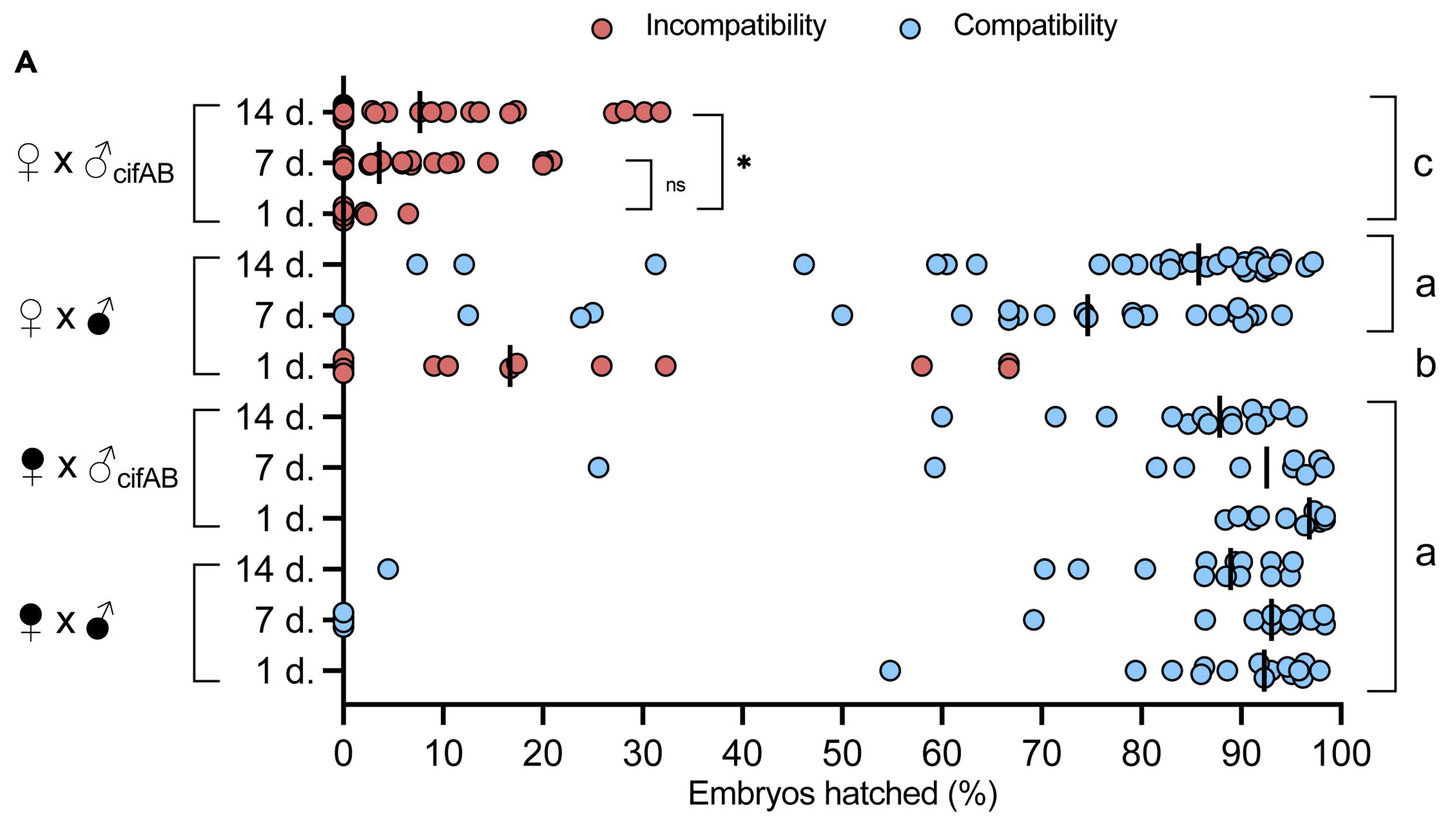Description:
Summary
Scientists at Vanderbilt University have engineered transgenic methods for controlling harmful insects such as mosquitoes. These tools may be applied to reduce the populations of insects that transmit infectious diseases to humans or are harmful to food crops and livestock.
Addressed Need
Vector-borne diseases such as Chikungunya, Dengue, and Malaria account for more than 17% of all infectious diseases, leading to more than 700,000 deaths and 400,000,000 cases annually [WHO]. Meanwhile, as much as 40% of global crop production is lost to pests every year, with invasive insects costing the global economy over $70 billion [FAO]. Although effective, chemical pesticides have negative impacts on human and environmental health. However, endosymbiotic Wolbachia bacteria are naturally present in 40 to 52% of all terrestrial arthropod species and are capable of manipulating their host’s reproduction by producing non-viable or sterile male offspring (known as male-killing and cytoplasmic incompatibility, respectively). Consequently, exploitation of Wolbachia biology can be used as an environmentally friendly method to control insect populations in a warming climate that facilitates insect range expansion.
Technology Overview
Vanderbilt researchers have developed several Wolbachia-based tools to manipulate the reproduction of harmful insects and investigate Wolbachia biology. The inventors have identified specific Wolbachia genes that are involved in male-killing and cytoplasmic incompatibility. By inserting these genes and novel gene drivers directly into arthropods, the inventors have generated transgenic insects that selectively kill or sterilize males and therefore can crash populations of vectors and pests. The inventors have also generated various Wolbachia genetic tools to more fully harness the symbiotic bacteria for further research or for spreading desirable traits into natural populations of vectors or pests.
Competitive Advantages
This collection of tools provides an effective, targeted system for reducing disease transmission and agricultural destruction by insects— all without the use of harmful synthetic pesticides. Unlike methods currently in the market that employ wild-type Wolbachia, which does not survive in higher temperatures and loses efficacy as hosts age, these transgenic methods are more durable over time and in rising temperatures and warmer climates (Figure 1). Additionally, these genetic tools also enable further enhancement of natural Wolbachia functions and could even be used to control pests and vectors refractory to Wolbachia infection.
Technology Development Status
Data from in vivo proof-of-concept experiments demonstrate that these genetic tools reduce populations of Drosophila melanogaster and Drosophila bifasciata more effectively than wild-type Wolbachia alone.
Intellectual Property Status
Patents: US20190216064A1, US11268100B2, EP3443106A1, US20210000092A1, US20210112792A1, EP3772930A1, US20220010317A1
Publication: Nature 2017. PLoS Pathogens 2019. iScience 2022.

Figure 1: Cytoplasmic incompatibility, which produces sterile male offspring, is significantly more effective and stable when introduced by transgenic males than by wild-type males infected with Wolbachia. While crossing uninfected wild-type females with transgenic males results in low numbers of viable embryos even as the males age (see 1d-7d-14d, 1st set of crosses), the cytoplasmic incompatibility induced by Wolbachia infection is quickly lost over time (2nd set of crosses). Filled sex symbols: wild-type Wolbachia infection. Empty sex symbols: no infection. Males transgenically expressing cifAB are indicated by subscripts. Letters a, b, and c denote statistically significant differences.